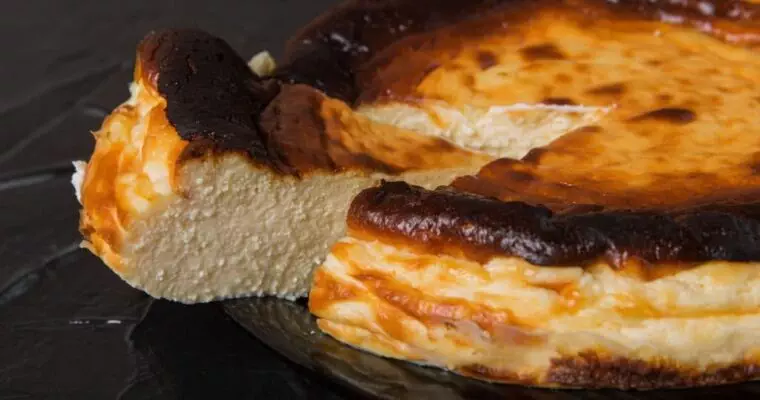Huesos de Santo, or “Saints’ Bones,” are a traditional Spanish sweet treat, intricately made from marzipan (almond paste). With their distinctive elongated, cylindrical shape, they are designed to resemble bones, complete with a filling that symbolizes marrow. Traditionally, this filling is a sweet egg yolk paste, giving the dessert a unique and rich flavor. These delicacies are trendy in Spain during the celebration of All Saints’ Day, or “Día de Todos los Santos,” on the first of November. Alongside buñuelos (fried dough balls), Huesos de Santo was a staple in Spanish pastry shops during this period. It was often displayed in ways reminiscent of reliquaries, adding to their cultural and religious significance.
Table of Contents
History and Origin of Huesos de Santo
The history of Huesos de Santo dates back several centuries and is deeply rooted in Spain’s religious and cultural traditions. Originally, these sweets were created as an offering for the deceased during All Saints’ Day, a day dedicated to remembering and honoring those who have passed away. The design and name of the dessert — resembling bones — are symbolic, reflecting the themes of death and remembrance that are central to this religious holiday.
Over time, Huesos de Santo evolved from a simple offering to a beloved confectionery enjoyed by families across Spain. The original recipe, which primarily used marzipan and egg yolk, has also seen variations, with modern versions featuring different fillings such as chocolate, fruit jams, or sweetened cream.
Ingredients Needed to Make Huesos de Santo
To prepare authentic Huesos de Santo at home, you’ll need the following ingredients:
For the Marzipan:
- 500g of ground almonds
- 500g of powdered sugar
- 100ml of water
For the Egg Yolk Filling (Dulce de Yema):
- 250g of sugar
- 100 ml of water
- 12 egg yolks
- A pinch of cinnamon (optional)
For Decoration:
- Icing sugar for dusting
These ingredients are simple, but the key to a perfect Huesos de Santo lies in the technique and patience during preparation.
Step-by-Step Guide to Making Huesos de Santo at Home
1. Preparing the Marzipan:
- Begin by mixing the ground almonds and powdered sugar in a bowl.
- Gradually add water while kneading the mixture until you achieve a smooth and pliable dough.
- Once the dough is ready, wrap it in plastic and let it rest for about 30 minutes at room temperature.
2. Making the Egg Yolk Filling:
- In a small saucepan, combine sugar and water, heating gently until the sugar dissolves completely to create a syrup.
- Beat the egg yolks in a separate bowl and slowly pour in the hot syrup while continuing to whisk.
- Return the mixture to the saucepan and cook over low heat, stirring constantly until it thickens into a custard-like consistency.
- Remove from heat, allow it to cool, and then refrigerate until firm.
3. Shaping the Huesos de Santo:
- Roll out the marzipan dough on a surface dusted with powdered sugar until it’s about 3mm thick.
- Cut the dough into small rectangles (approximately 6×3 cm).
- Using a wooden dowel or similar tool, roll each rectangle into a cylinder, creating the hollow “bone” shape.
- Carefully remove the dowel and set the marzipan cylinders aside.
4. Filling the Marzipan Cylinders:
- Once the marzipan bones are ready, use a piping bag to fill each one with the egg yolk custard.
5. Final Touches:
- Dust the finished Huesos de Santo with icing sugar for a classic look.
Tips and Variations to Perfect the Recipe
Creating the perfect Huesos de Santo requires attention to detail, particularly in handling the marzipan and filling. Here are some tips to ensure your success:
- Consistency of Marzipan: The marzipan should be pliable but firm enough to hold its shape. If it’s too sticky, add more powdered sugar; if it’s too dry, incorporate a bit more water.
- Smooth Egg Yolk Filling: To avoid a grainy filling, ensure the syrup is added to the egg yolks slowly while whisking vigorously.
- Variations: Modern takes on Huesos de Santo include fillings like chocolate ganache, fruit jams, or even flavored cream. Feel free to experiment to find your favorite version.
Cultural Significance of Saints´Bones in Spain
In Spain, Huesos de Santo are more than just a sweet treat; they are a significant part of the cultural and religious fabric. These desserts are traditionally consumed during All Saints’ Day, a time when Spaniards pay homage to their deceased loved ones. The symbolic nature of Huesos de Santo, with their bone-like appearance and rich filling, reflects the themes of mortality and remembrance.
Their presence in pastry shops across Spain during late October and early November is a reminder of the deep-rooted customs that continue to thrive in modern society. The act of preparing and sharing these sweets with family and friends during this time serves as a way to honor traditions and keep the memories of ancestors alive.
Spanish Recipes Related to Huesos de Santo
If you’re intrigued by Huesos de Santo, you might also enjoy trying your hand at other traditional Spanish desserts that are popular during All Saints’ Day:
- Buñuelos de Viento: Light, airy dough balls that are often filled with cream, chocolate, or custard, and dusted with sugar.
- Panellets: A Catalonian treat made from marzipan, typically shaped into small balls and coated with pine nuts.
- Torrijas: Spanish-style French toast, often soaked in milk or wine and sprinkled with cinnamon sugar, traditionally made during Lent but enjoyed year-round.
Each of these desserts carries its own historical significance and unique flavor, making them perfect complements to the Huesos de Santo in any festive spread.
Frequently Asked Questions about Huesos de Santo
Q: Can Huesos de Santo be made with store-bought marzipan? A: Yes, if you’re short on time, store-bought marzipan can be used. However, homemade marzipan offers a fresher taste and allows you to control the texture better.
Q: How long can Huesos de Santo be stored? A: They can be stored in an airtight container for up to a week. However, for the best texture and flavor, it’s recommended to consume them within a few days of preparation.
Q: Are there any common variations of Huesos de Santo? A: While the traditional filling is egg yolk paste, modern versions often include chocolate, fruit preserves, or cream fillings.
Q: Is it difficult to make Huesos de Santo? A: The recipe requires some patience and precision, particularly in shaping the marzipan and making the filling, but with practice, it’s an achievable and rewarding task.
Conclusion: Preserving Spain’s Culinary Traditions
Huesos de Santo are more than just a delicious treat; they are a connection to Spain’s rich cultural and religious traditions. By preparing and enjoying these sweets, you are participating in a culinary heritage that has been passed down through generations. Whether you follow the traditional recipe or experiment with modern variations, making Huesos de Santo at home is a wonderful way to celebrate All Saints’ Day and keep these cherished customs alive. As you share these with family and friends, you honor the past and create new memories for the future.

Huesos de Santo Recipe: 5 Essential Steps to Create an Irresistible Spanish Dessert
Ingredients
For the Marzipan:
- 500 g Ground almonds
- 500 g Powdered sugar
- 100 ml Water
For the Egg Yolk Filling (Dulce de Yema):
- 250 g Sugar
- 100 ml Water
- 12 Egg yolks
- A pinch of cinnamon (optional)
For Decoration:
- Icing sugar for dusting
Instructions
- Preparing the Marzipan:Begin by mixing the ground almonds and powdered sugar in a bowl.Gradually add water while kneading the mixture until you achieve a smooth and pliable dough.Once the dough is ready, wrap it in plastic and let it rest for about 30 minutes at room temperature.
- Making the Egg Yolk Filling:In a small saucepan, combine sugar and water, heating gently until the sugar dissolves completely to create a syrup.Beat the egg yolks in a separate bowl and slowly pour in the hot syrup while continuing to whisk.Return the mixture to the saucepan and cook over low heat, stirring constantly until it thickens into a custard-like consistency.Remove from heat, allow it to cool, and then refrigerate until firm.
- Shaping the Huesos de Santo:Roll out the marzipan dough on a surface dusted with powdered sugar until it’s about 3mm thick.Cut the dough into small rectangles (approximately 6×3 cm).Using a wooden dowel or similar tool, roll each rectangle into a cylinder, creating the hollow “bone” shape.Carefully remove the dowel and set the marzipan cylinders aside.
- Filling the Marzipan Cylinders:Once the marzipan bones are ready, use a piping bag to fill each one with the egg yolk custard.
- Final Touches:Dust the finished Huesos de Santo with icing sugar for a classic look.
Notes
- For a richer flavor, use blanched almonds.
- Store huesos de santo in an airtight container at room temperature..








